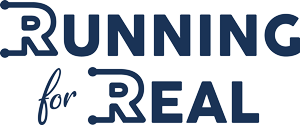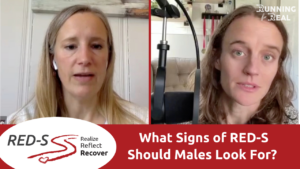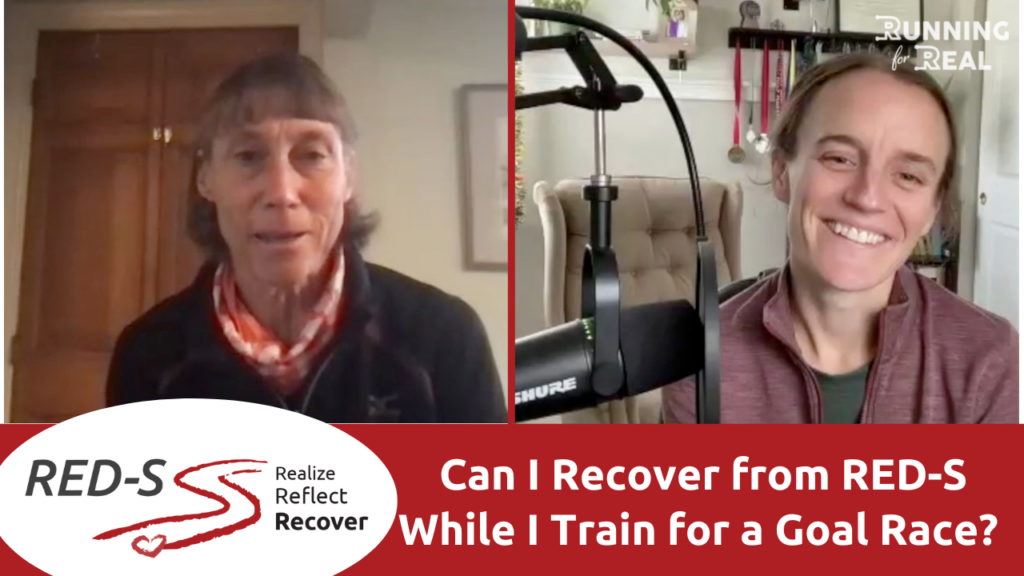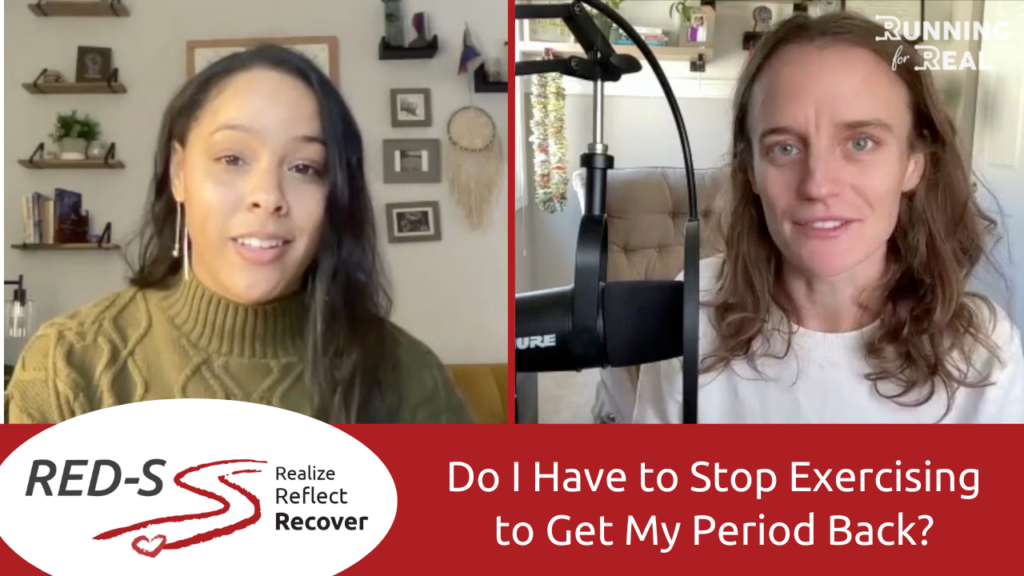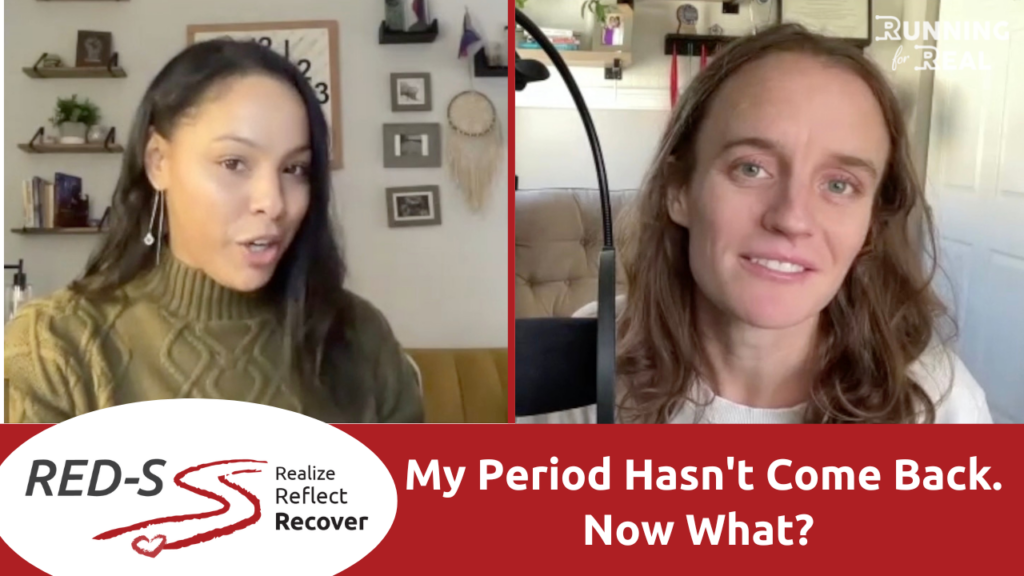Because amenorrhea (the absence of a menstrual cycle) is the most obvious symptom of RED-S / REDS, many people aren’t aware that it also affects men and postmenopausal women.
But Relative Energy Deficiency in Sport is much more than the lack of a period – it can also lead to osteopenia/osteoporosis, stress fractures, gastrointestinal issues, mental health challenges, and many other harmful effects.
Tina and sports nutrition and performance expert Rebecca McConville discuss how RED-S / REDs affects men and masters runners.
Read the transcript
[Tina] Can RED-S affect men too or is it just women?
[Becca] RED-S does not discriminate, so yes, males are impacted just the same. That is where they went back and when they expanded the female athlete triad, they realized that they were missing a big piece of the puzzle and that was the male athlete. What we are learning and do know, and we’re right on the beginning of research that’s out there, is that males do have a lower threshold or excuse me, a higher threshold of lower energy availability before they will start to see those negative symptoms of RED-S.
[Tina] Explain a little bit more to us; what does that mean?
[Becca] So for females, generally speaking, we will see a negative consequence when they drop between 30 to 35 calories per fat free mass. Now you don’t have to have body composition, this is just what the research has shown. Males can sometimes drop below that to 20 to 15 before they have negative consequences, meaning bone stress injuries, sexual health dysfunction, digestive issues, as well. That’s the literature speaking. However, if somebody does start to have consequences as they drop their energy, that doesn’t mean that they don’t have RED-S; this is just kind of the starting point that they can consistently see health decline or performance decline, as well.
Where we do see a little bit of differences, where females tend to be impacted more rapidly by changes in nutrition, males tend to show more deficient signs of RED-S through energy expenditure, through the higher volume training, higher intensity training. That seems to be more strongly correlated with injuries, whereas females when they have a drop in their intake,
that seems to have that higher incident of health implications or injuries for them. Again, literature and research is brand new in this area so there’s a lot that’s coming out that males can definitely be impacted just as females and at any age, as well.
[Tina] Thank you. So I want to ask another follow-up, but for what you just said, at any age, so you are literally talking any age, this is not just of reproductive years.
[Becca] Correct. I think the largest growing endurance group is now post-menopausal women. They’re saying, “Hey, I love this sport; I want to continue to be active; my kids are grown” or maybe they choose not to have children and they’re like, “Why should I put a cap on what age I can continue to do this?” but the challenge is there’s no more menstrual cycle. But they have their own cultural Impressions that are upon them. You know, we hear so much weight and fat phobia in that post-menopausal age that they’re very carb restrictive, which is another part of RED-S. They’re very energy deficit, trying to control and manipulate their weight, and so I’ve seen a lot of athletes come in to see me now with RED-S symptoms in that post-menopausal state.
[Tina] So to clarify that, if you could. First, so you said so for men, RED-S tends to occur when they are in higher volumes of training; that is kind of the most common factor in in men who are experiencing RED-S. For women, it is cutting that caloric, or going under, you know, what your body needs to function correctly. And then for Masters or older runners or older people who exercise, you know, passionately maybe, for those people it’s going to be symptoms… Which of those do they fall into? Does it still follow the gender lines or
if you could just clarify those first two and then what would you say about the older generation?
[Becca] Well, with the older generation, you know, going back to the expansion of triad, you lose a big piece of that and that’s the fact of the cycle normality, but they still have bone stress injuries, even higher risk of osteoporosis because now they are in that post-menopausal state. We see gut health implications in post-menopausal, but then that’s complicated with under-fueling, and a lot of them get overlooked until they have a lot of different symptomatology, and then they come to see you and you’re like, “Well, you’re trying to train, you know, ten hours a week on 1500 calories. That’s just not doable, and your body is not getting its energy needs met.”
[Tina] Okay, so this is a good reminder for those, if if you are seeing those RED-S symptoms, even if you are postmenopausal, definitely get those checked out early. Thank you.
check it out
Recovering from RED-S is hard. It’s even harder if you’re working through it alone. Even if you have professional support, they’re not available 24-7, and that can lead to going down search engine rabbit holes that have the potential to derail everything.
Our online resource, RED-S: Realize. Reflect. Recover, will answer all those questions swimming around in your head about recovery. It will give you the opportunity to connect with the experts you’ve come to know here, and to surround yourself with a community of others who are going through it too.
THANK YOU! to Athletic Greens and Tracksmith for supporting this YouTube series and RED-S: Realize. Reflect. Recover.
Go to athleticgreens.com/reds to get five free travel packs of AG1 and a free one year’s supply of vitamin D3+K2 with your subscription!
When you go to https://tracksmith.com/tina and use the code TINA15 at checkout, you’ll get free shipping and Tracksmith will donate 5% of your order to Rising Hearts, the Indigenous-led nonprofit founded by Jordan Marie Daniels.
more about becca:
Rebecca McConville, RD, LD, CSSD, CEDS, is a sports nutrition and performance expert who helps her clients explore and strengthen their relationship with food, weight, body image and sports performance. Her book, “Finding Your Sweet Spot,” helps athletes maximize their potential while avoiding the dangers of RED-S. You can find Becca at https://beccamcconville.com.
more you might like…
